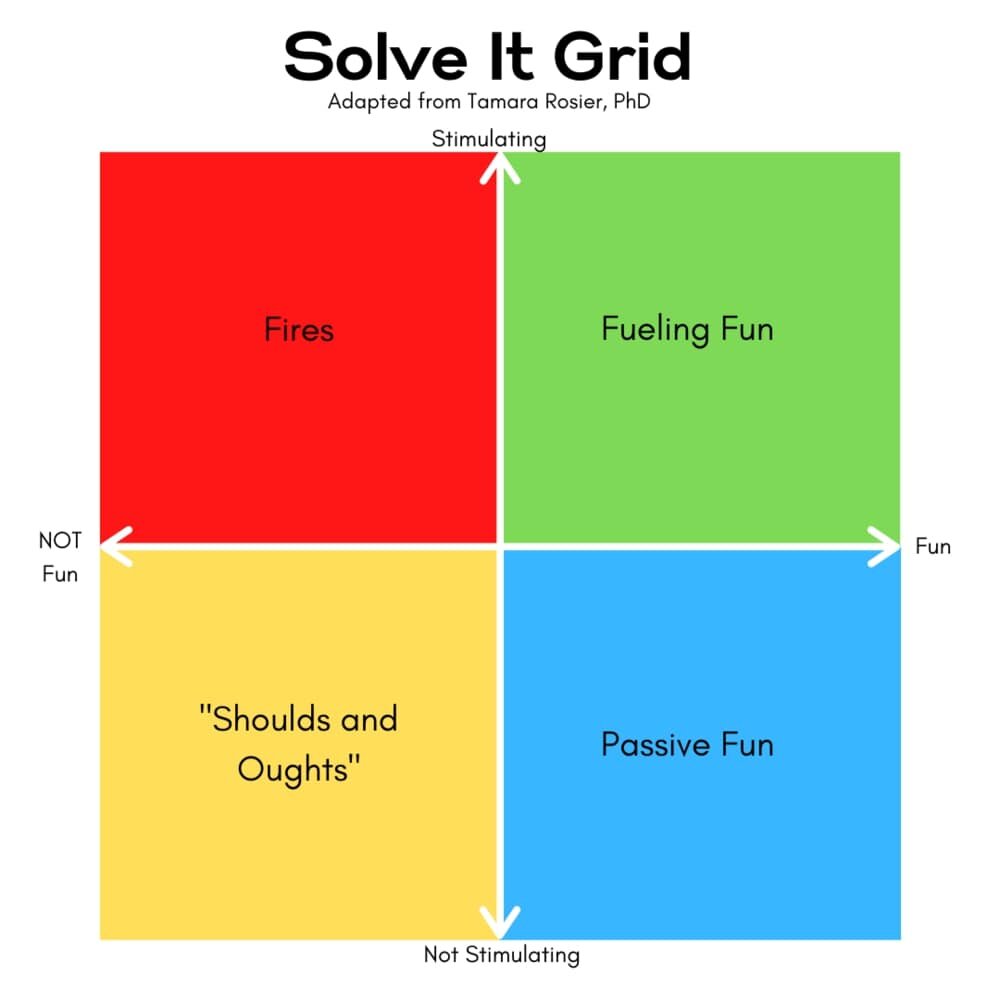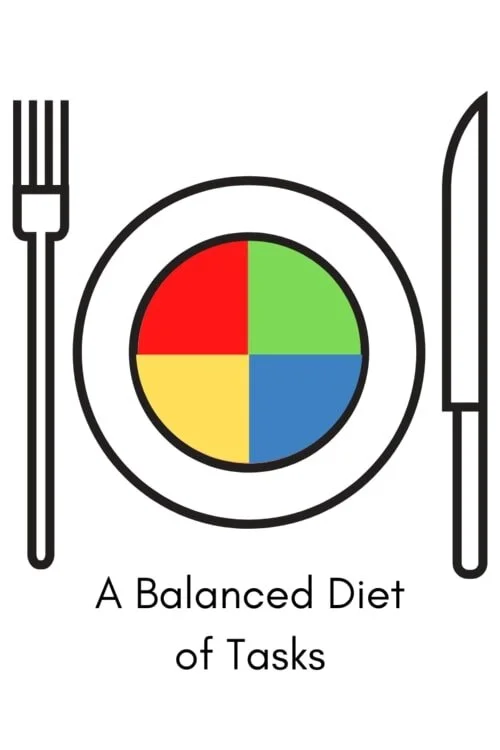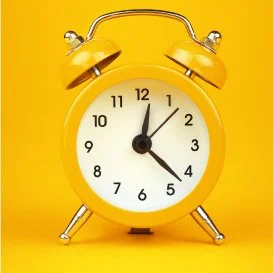How to Find Balance with an ADHD Brain
This morning my family and I were doing what has become our new Saturday morning routine: We make pancakes and play for a bit. Once the breakfast dishes have been done, I turn up the Trolls soundtrack, and we rock out to "Can't stop the feeling." Full-on footloose family style.
Once our energy is high- we start dolling out the Saturday morning chores. My husband vacuums, I scrub the kitchen and bathrooms, my oldest mops, and my littlest collects trash (a task that apparently requires 1 hour and 563 redirections for my help-rejecting 3-year-old).
Once everyone's duties are complete, we pop a giant bowl of popcorn and pile in front of the TV to watch a movie (while I try not to stress about all the pieces of popcorn falling from hungry little mouths ruining our newly clean family room).
It is one of the sweet routines that has emerged from this quarantine and perhaps one we will carry forward into our non-quarantine life.
But, there is a major problem with it.
By lunchtime- we are all lazy sloth puddles who want to do nothing more than continue to binge-watch cartoons and stuff our faces with snacks until we roll off the couch in a junk food coma.
Where did our crazy dance party selves go? Only 2.5 hours have passed, and it's not like we ran a marathon during them. It's as if a ravenous energy monster has greedily sucked every drop out of our bodies.
So what gives?
My favorite tool to understand this strange phenomenon is Tamara Rosier's Solve It Grid which she writes about in her wonderful book, Your Brain is not Broken. She originally crafted this tool as a way to understand time, but it has always made more sense to me as a way of understanding energy.
The beauty of the grid is that once you understand it and know how to apply it to your life, you can use it to propel action and to feel more balanced.
Let me explain.
Think you might have ADHD?
Take a free online assessment to find out.
(Takes 3 minutes)
TAKE THE QUIZ
The ADHD brain is energized by 2 things: Stimulation and Fun.
Both stimulation and fun are not either/or categories- they exist on a continuum. Some things are more or less stimulating (or more or less fun) than others. So, we can graph these 2 factors on a scale from fun to not fun and from stimulating to not stimulating.
When we do that, we get 4 quadrants. Now let’s color those quadrants- RED, YELLOW, BLUE, and GREEN.
RED
Let's start with the RED quadrant: RED activities are not fun but very stimulating. They are emergencies and crises. They are the things that have a looming deadline or someone on the other side, demanding something. They are essential and necessary and need to happen right now.
RED tasks are easy to attend to. They turn the ADHD brain on and energize it in the moment. But, they are also incredibly draining. A day of attending only to RED tasks leaves you exhausted and empty.
YELLOW
The YELLOW quadrant is what I often call ADHD kryptonite. These are things that are not only not fun, but they are also not stimulating. Nothing is driving you to do them other than "it would be good to do." These are the tasks that often move our life forward, and they are the things we feel we "should" do. Often they are things without a clear deadline or a deadline far in the future. They are things like: getting ahead on taxes, doing laundry when you still have plenty of clean underwear, cleaning out the garage, or filing expense reports every Tuesday.
Yellow tasks require energy to start, are a steady energy drain but do not provide energy while doing them. For all these reasons they are very difficult to maintain and almost impossible to get started.
BLUE
The BLUE quadrant is what I call "passive fun." These are tasks that are fun but not necessarily stimulating. This quadrant is almost entirely composed of screen-based things- internet searching, social media, TV, video games. They are things that require very little energy from you to engage in and will provide a slow recharge. This is the quadrant we often use at the end of the day- it’s the thing we use to avoid and the thing we do when we have nothing left.
GREEN
The final quadrant, the GREEN quadrant, is the active fun section. These are things that give us energy, but they also require that we spend energy to do them. Everyone's green tasks are slightly different, but they may include exercise, socializing, creative projects, or playing with kids. Green tasks fuel us, they improve our mood, our focus and they fill our executive functioning stores. They are ADHD gold but because they require energy to start, they are very often neglected.
Once you start to recognize the various colors in your life, you may start to see a pattern emerge:
The Red-Blue Slide
If you are like many people with ADHD (and, if we are honest- many people in general) you may find yourself doing what I call the RED-BLUE slide. You spend most of your day in red- putting out fires, responding to crisis, or frantically working up against a deadline. All this frantic, emergent work leaves you depleted and exhausted. And there is little we CAN do when depleted and exhausted, so we turn to BLUE to recharge.
The problem is that BLUE is a slow recharge. So slow, in fact, that we seldom have enough time to do enough blue to really get us going again. So we wait until another crisis appears to spur us into action and then that provides the energy to get us up off the couch again. And the cycle repeats.
A Balanced Diet
I have found for myself, and my clients, that an ideal day, one that feels balanced, productive, and grounding, includes something from each color. Some time spent on engaging fun, some time spent addressing the shoulds and oughts, some time putting out fires, and some time in full relax/ recharge mode.
But those green and yellow quadrants can feel so inaccessible sometimes- particularly when you are used to the RED-BLUE slide- so how do you do that?
HACK YOUR COLOR SYSTEM
You can hack the grid by starting your day in green. The thing about green is that while it requires energy, it gives more energy than it takes. But, it is hard to be able to give energy when you are continually being drained all day. So if you start your day in green, you can use the energy you got from sleep and then build on it. This provides a surplus that you can then use to immediately turn your attention to yellow tasks.
I often recommend that people schedule an hour (or two if you are an overachiever) immediately after exercise in the morning for their deep focus, YELLOW time. This time is held sacred and phones and emails are set to do not disturb during this time. Because the RED will always call you away from the YELLOW- it will always seem more important. You will get there, but give yourself an hour to just do YELLOW.
The red tasks will come into the rest of your day naturally- you don't need to worry about that- someone will want something from you, the kids will whine for dinner, your boss will demand the report, or your customer will complain about a missing product. So you will deal with the fires as they erupt. And then you can end your day in blue- landing the plane with a nice long runway of relaxing fun that takes little energy.
What energy patterns have you noticed in your life? What colors do you spend the most time in? Share your favorite grid hacks in the comments below!
Ready to shift from
meltdown to mastery?
This online course has been designed specifically to help teach the strategies ADHD brains need to help them move from overwhelm and meltdowns to confident emotional mastery.
Want to know more about
thriving with ADHD?
Check out these other articles:














Finding Your ADHD Sweet Spot: Navigating Optimal Stimulation for a Balanced Brain